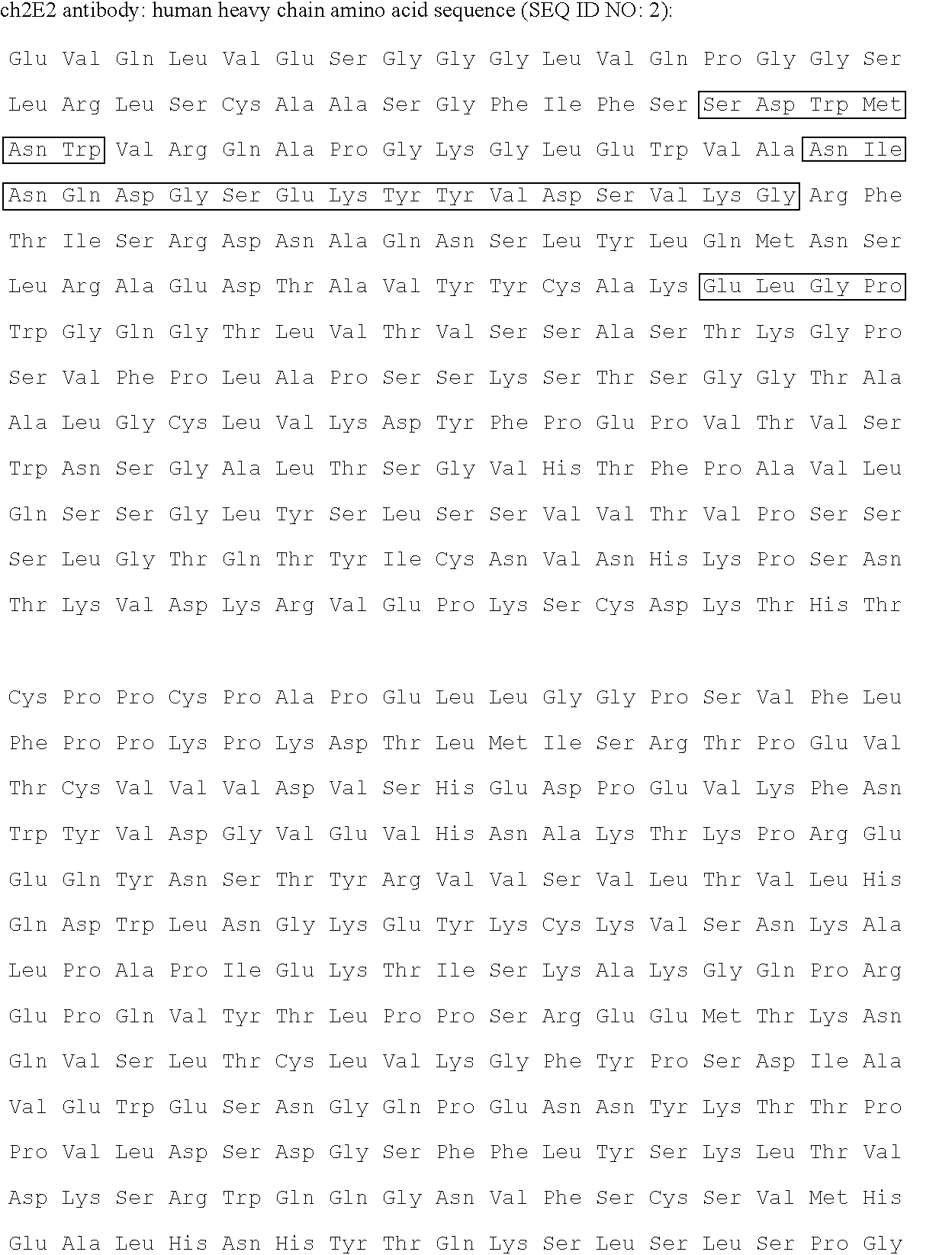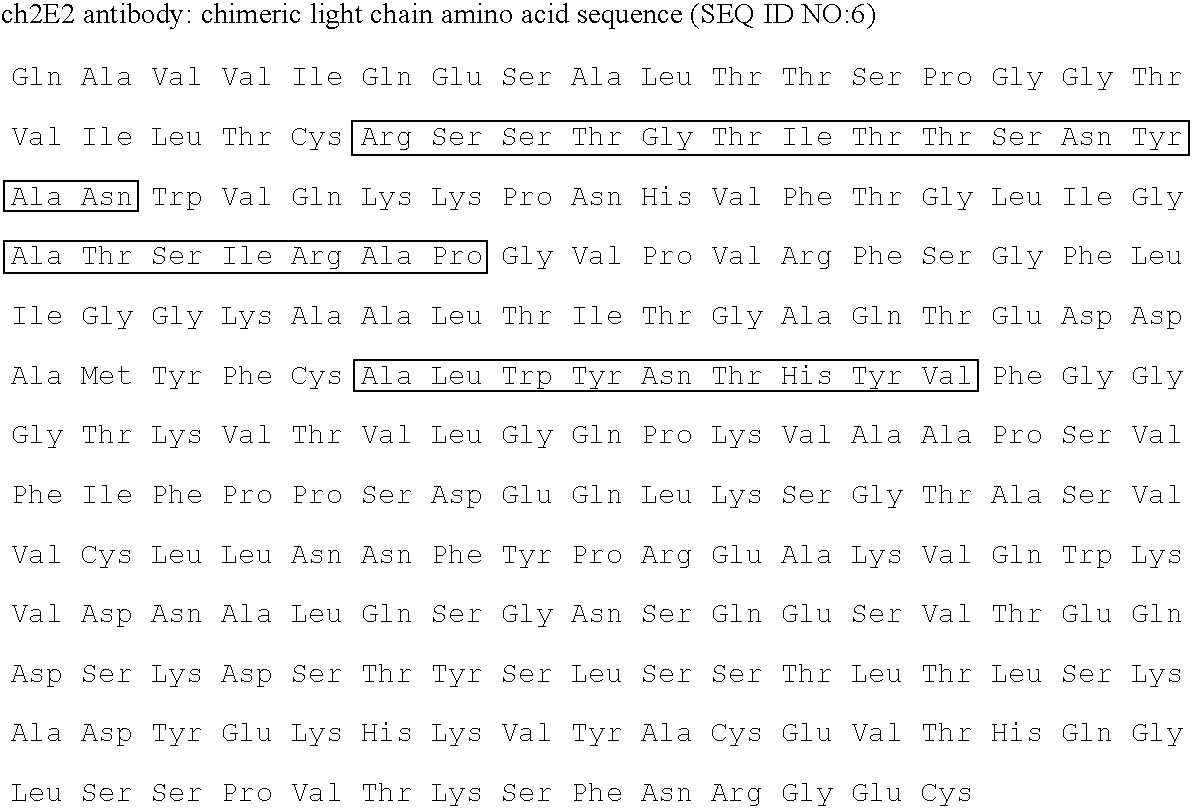Chimeric Antibodies, Compositions and Methods for Treating Cocaine-Related Disorders
- Summary
- Abstract
- Description
- Claims
- Application Information
AI Technical Summary
Benefits of technology
Problems solved by technology
Method used
Image
Examples
example 1
Variants of the ch2E2 Antibodies Having Chimeric Light Chains
[0127]Low expression of the native 2E2 anti-cocaine mAb, which includes a human heavy chain and a mouse λ light chain, has been seen from hybridoma cells and in transient transfections. Many factors could cause this phenomena, including a natural incompatibility of a human heavy IgG chain with a mouse light IgG chain. Thus, in the studies described herein, the 1B3 antibody constant region, which is human κ, was spliced to the variable region of the mouse λ light chain. This change increases the expression and / or secretion of the 2E2 antibody while retaining or increasing cocaine affinity.
[0128]Briefly, NCBI Protein Blast and other databases were used to determine the probable variable and constant regions of the 2E2 and 1B3 light chains. At the selected junction of the 2E2MuLgt variable / 1B3HuLgt constant region, PCR primers were designed to incorporate the first 15 bp of the 1B3HuLgt sequence onto the 3′ end of the 2E2MuLg...
example 2
Codon-Optimized Variants of the ch2E2 Antibodies
[0131]An in silico analysis of the amino acid primary structure and possible T-cell epitopes of the chimeric 2E2 IgG light chain described above in SEQ ID NO: 6 (i.e., 2E2 murine variable region with 1B3 human κ constant region) indicated that two amino acid residues, Kabat I5 and F67 (both hydrophobic), could possibly cause structural problems since the normally seen, and germline, sequences showed hydrophilic amino acids (T and S, respectively) in those positions. Also, a known TCED (T-cell epitope) was detected in the Framework 4 region of the 2E2 MuVar region. This latter amino acid sequence showed divergence from the J germline sequence in possessing a “GGG” triplet that usually presents as “GTG”. Thus, the middle G to T is changed to result in the T-cell epitope becoming identical to a human JL1, i.e., YVGTGTKVTVL (SEQ ID NO: 40).
[0132]In the variants described herein, codons were selected so as to avoid creating restriction site...
PUM
| Property | Measurement | Unit |
|---|---|---|
| Composition | aaaaa | aaaaa |
| Light | aaaaa | aaaaa |
Abstract
Description
Claims
Application Information
 Login to View More
Login to View More - R&D
- Intellectual Property
- Life Sciences
- Materials
- Tech Scout
- Unparalleled Data Quality
- Higher Quality Content
- 60% Fewer Hallucinations
Browse by: Latest US Patents, China's latest patents, Technical Efficacy Thesaurus, Application Domain, Technology Topic, Popular Technical Reports.
© 2025 PatSnap. All rights reserved.Legal|Privacy policy|Modern Slavery Act Transparency Statement|Sitemap|About US| Contact US: help@patsnap.com



